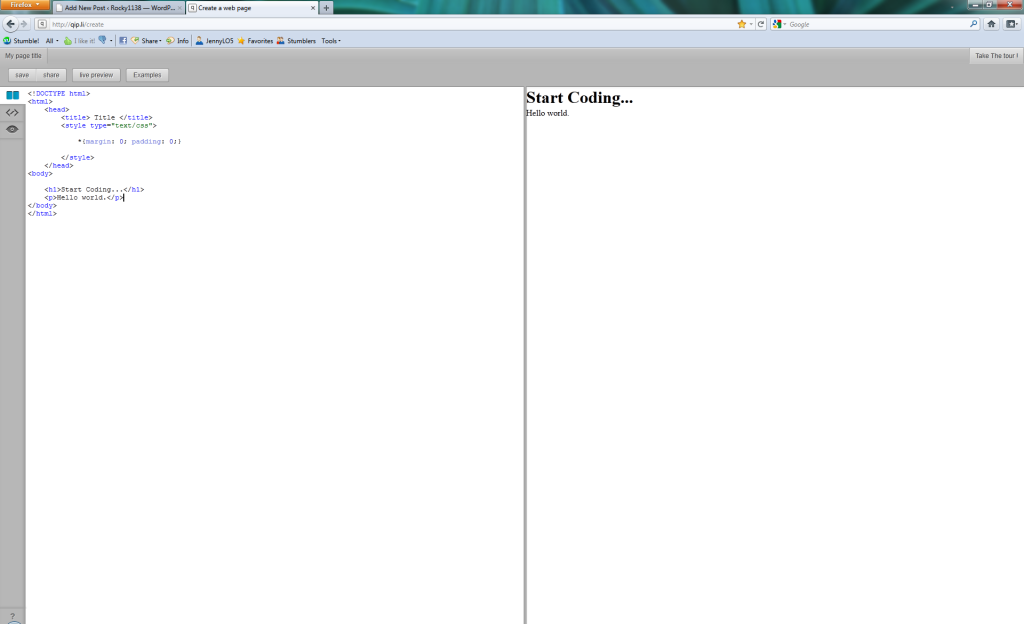Arrays? Who needs ’em?
If you’re into developing websites chances are there will be sometime during your life/career when you’ll need to have users enter data into a HTML form but you have no idea how many of a certain variable they’re going to be sending in or how much data they’re going to fill in of the same type.
An example would be a HTML form that has three input boxes, one for each of your friend’s names (first and last). You are able to enter between 1 and 3 friends into the boxes. For such an example your HTML form may look something like this:
<form method="post" action="">
<p>Enter your friend's names (first, last):</p>
<input maxlength="30" name="friend1" size="30" type="text" />
<input maxlength="30" name="friend2" size="30" type="text" />
<input maxlength="30" name="friend3" size="30" type="text" />
<input type="submit" value="Submit" />
</form>
That all looks fairly normal. Keep in mind this is a simple example. But, what about if you’ve got the option to enter 10 friends. What about 20? You might have to re-work your form if you want to enter 20 friends. Any more than 10 and you might want to look at alternatives like importing from XML or CSV.
Let’s say you’ve got the option to enter up to 10 names. Your increasingly ugly form would then look like this:
When you submit this form then you’ve got to check each input box to first ensure they entered a variable and then check to see what that variable is. With so many input boxes to check from it becomes a repetitive and arduous task.
Example PHP code:
// Good God.. okay let's start this horrible task
if ($_POST['friend1']) {
doSomething($_POST['friend1']);
} else {
complain();
}
if ($_POST['friend2']) {
...
} else {
complain();
}
if ($_POST['friend3']) {
...
} else {
...
}
...
...
// There's got to be a better way!
Save time with arrays.
Using PHP and HTML, the HTML form code can be re-written to have the server create a PHP array of your friends’ names, like this:
HTML Form:
<form method="post" action="">
<p>Enter your friend's names (first, last):</p>
<input maxlength="30" name="friend[]" size="30" type="text" />
<input maxlength="30" name="friend[]" size="30" type="text" />
<input maxlength="30" name="friend[]" size="30" type="text" />
<input maxlength="30" name="friend[]" size="30" type="text" />
<input maxlength="30" name="friend[]" size="30" type="text" />
<input maxlength="30" name="friend[]" size="30" type="text" />
<input maxlength="30" name="friend[]" size="30" type="text" />
<input maxlength="30" name="friend[]" size="30" type="text" />
<input maxlength="30" name="friend[]" size="30" type="text" />
<input maxlength="30" name="friend[]" size="30" type="text" />
<input type="submit" value="Submit" />
</form>
Server-Side PHP:
// Loop through the friend array
foreach ($_POST['friend'] as $value) {
// Do something with each valid friend entry ...
if ($value) {
echo $value."<br />";
...
}
}
Let’s walk through that PHP code.
It’s fairly simple. We walk through the php $_POST[‘friend’] array that we retrieved from the HTML form using foreach and for all of the entries on the form that the user typed in we do something with (in this case we simply echo them to the screen).
This simple foreach loop will save you time and the good part is that you can have any number of friends on your form (I’m sure there’s a maximum somewhere though.. 256 maybe?) and this block of code will still work.
In the next article I’ll show you how to do the same thing with ColdFusion.

